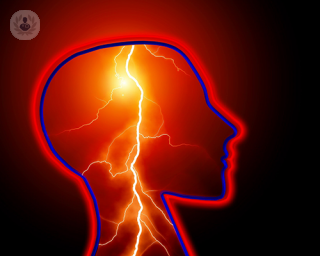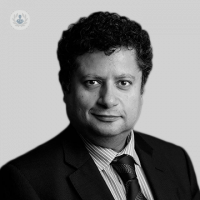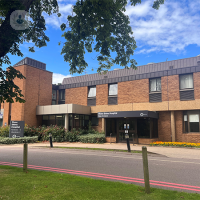Brain tumour
Professor Andrew McEvoy - Neurosurgery
Created on: 11-13-2012
Updated on: 07-26-2023
Edited by: Kate Forristal
What are brain tumours?
A brain tumour is the abnormal growth of cells in the brain. It may be benign, non-cancerous, or malignant, containing cancerous cells that grow fast.
Primary tumours are named after the location in which they begin, in this case the brain. There are other tumours that originate in other parts of the body and spread by metastasis to the brain.
The speed at which a brain tumour grows will depend on the type of tumour and the person affected, the location will determine how it affects the central nervous system. There are different types of brain tumour, including:
- Astrocytoma
- Choroid plexus carcinoma
- Craniopharyngioma
- Glioma
- Glioblastoma
- Ependymoma
- Meningioma
- Medulloblastoma
- Brain metastasis
- Acoustic neuroma
- Oligodendroglioma
- Pineblastoma
- Paediatric brain tumour
- Embryonic tumour
- Pituitary tumour.
Prognosis
If the tumour is cancerous, it is a serious condition and prognosis is uncertain. The success rate for treating the tumour will vary from person to person and depends on tumour location, among other factors. Multiple specialists may be involved in the diagnosis and treatment of brain tumours, including neurologists, oncologists, and neurosurgeons.
What are the symptoms?
Brain tumour symptoms will vary depending on the size, speed of growth, and the exact tumour location.
The most common symptoms of a brain tumour tend to include:
- Onset of pain or changes in its pattern
- Headaches that steadily get worse and more intense
- Nausea and vomiting
- Vision issues, loss of peripheral vision and double vision
- Gradual loss of sensitivity or movement in the limbs
- Difficulty maintaining coordination and balance
- Difficulty speaking
- Confusion and disorientation when dealing with everyday issues
- Personality or behaviour changes
- Convulsions
- Hearing problems.
Medical tests
If a brain tumour is suspected, the specialist may order a series of tests in order to diagnose it and, if necessary, start immediate treatment. The main tests include:
- Neurological examination: vision, hearing, balance, and coordination are checked. If the patient has issues in one or more areas, it can give a clue about the affected area.
- Diagnostic imaging tests: MRI scans are normally done to diagnose a brain tumour. CT scans are also often done.
- Tests to find cancer in other parts of the body: If the specialist thinks that the tumour may have been caused by a cancer that has spread, they may do a CT scan or a positron emission tomography (PET scan) to find the lung cancer for example.
- Sample collection and analysis: these are more commonly known as biopsies. A sample of tissue is taken to examine it more closely in a lab.
What causes brain tumours?
Tumours that originate in the brain are known as primary tumours. Tumours that originate in another parts of the body but end up affecting the brain are known as secondary or metastatic tumours.
Primary brain tumours originate due to a cell DNA mutation. These mutations cause cells to divide and grow faster, while healthy cells die. This results in a mass of abnormal cells that form a tumour.
In adults, primary brain tumours are not as common as secondary brain tumours. There are different types of primary tumours, including:
- Gliomas: that begin in the brain or spine and include astrocytomas, ependymomas, oglioastrocytomas, oligodendrogliomas, and glioblastomas.
- Meningiomas: these arise from the membranes that surround the brain and spinal cord, which are called the meninges.
- Acoustic neuromas: benign tumours that develop on the nerves that control balance and hearing, that lead from the inner ear to the brain.
- Pituitary adenomas: benign tumours that grow in the pituitary, in the base of the brain.
- Medulloblastomas: cancerous tumours that are common in children. They begin in the back of the brain and spread through the cerebrospinal fluid.
- Germ cell tumours: these develop during childhood, when the testicles and ovaries are forming, although they can also affect other parts of the body.
- Craniopharyngiomas: these are rare non-cancerous tumours that can affect other parts of the body.
Metastatic or secondary tumours are those that heave spread from other parts of the body and sometimes end up developing in the brain.
They are more common in people who have had cancer before. Any type of cancer can spread to the brain, the most common to do so are; breast cancer, colon cancer, lung cancer, kidney cancer, and melanoma.
What is the treatment?
The treatment for brain tumours depends on the type of tumour you have and how big it is, or how far it has spread. Treatment will also depend on the location of the brain tumour and your level of health and fitness. Treatments include:
- Medication (steroids)
- Surgery
- Radiotherapy
- Chemotherapy

















